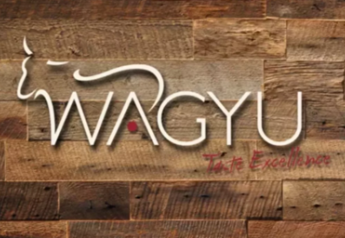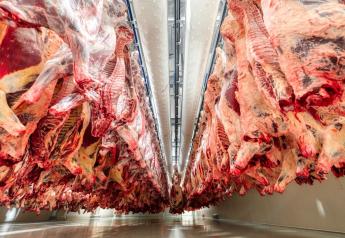Does efficiency equal sustainability? Part 1
After several years of discussion, "sustainability" in beef production still means different things to different people. To some, the pastoral image of small herds grazing extensive pastures with minimal inputs represents the only form of sustainable production. To others, more intensive production systems provide efficiencies that directly improve sustainability.
During the recent Global Conference on Sustainable Beef, held in Banff, Alberta and sponsored by the Global Roundtable for Sustainable Beef (GRSB) and the Canadian Roundtable for Sustainable Beef, one point became clear; beef producers have multiple paths toward sustainability, and continuous improvement against documented benchmarks can make all beef-production systems more sustainable. At the very least, documentation of sustainable practices can benefit long-term consumer confidence in beef and help support global beef demand into the future.
Established in 2012, the GRSB is a broad, multi-stakeholder group working toward defining, measuring, improving, documenting and communicating sustainable beef-production practices around the world. Members include end users such as McDonalds and A&W, meat companies such as Cargill and JBS, industry suppliers such as Elanco, Merck Animal Health and Zoetis, producer groups including NCBA and Certified Angus Beef and advocacy organizations such the World Wildlife Fund and The Nature Conservancy.
GRSB defines sustainable beef as "a socially responsible, environmentally sound and economically viable product that priorities planet, people animals and progress."
At the core of the discussion lies the fact that, in terms of feed efficiency alone, beef production never will match poultry or fish. However, as ruminant animals adapted to a wide range of environments, cattle thrive on grazed or harvested forages, grown on land unsuitable for production of crops for human consumption. Adding corn or other grains to rations in a confinement system for part of the production system creates efficiencies while also improving beef quality. That step, however, remains a point of contention between some advocates of beef sustainability.
During the global conference, a key session featured a debate on whether "chasing efficiency will lead to positive environmental and social outcomes." On one side, the debaters included Carrie Balckom, Executive Director of the American Grassfed Association and Dr. Lesley Mitchel, Chief Policy Advisor and Head of Farming Policy for World Animal Protection. Representing the efficiency stance were Dr. Robert Cady, Global Sustainability Lead for Elanco, and Dr. Martin Scholten, General Director, Animal and Marine Sciences, Wageningen University, The Netherlands. Unlike some other "debates" we have seen recently, the participants outlined their philosophies and respectfully disagreed on some points while generally agreeing that beef production has more than one path toward greater sustainability and that any production system has room for improvement.
Dr. Cady, from Elanco, kicked off the discussion, noting that the global population likely will increase by 2 billion people over the next 25 years. Longer life spans account for much of the growth, with the fastest increase in people over 70 years of age. Older people generally eat less than younger, but they also need adequate protein in their diets to maintain muscle mass.
Trends also indicate dramatic growth in the number of people in the economic middle class. Today, about 1.5 billion of 7 billion fall in the middle class. That number will increase by 3 billion by 2030, and with increased global wealth, we'll see substantial growth in animal-protein consumption.
Given these expected drivers of demand for meat, and beef in particular, Clady says we will need to produce more with less, meaning we need to use resources such as land, feed and water more efficiently, while also reducing greenhouse-gas emissions (GHG). Historically, he says, humans have tended to deplete resources and then move on, since land and water seemed infinite. In reality, with land accounting for about one-third of the earth's surface, land suited for agriculture accounts for about one-third of the total, and about one-third of that is rangeland. Today, virtually all inhabitable places in world are inhabited, and the land suited to agriculture already is being used for food production.
One key for addressing future food needs is to reduce food waste, Clady says, particularly post-harvest waste, such as "plate waste" in developed countries and pre-harvest waste in less developed regions.
Elimination of waste alone however, will not address supply needs. Intensification of agriculture, including high-yield crop production, concentrated animal feeding and use of technologies such as growth promotion, genetics, parasite control, disease management, enhanced reproduction methods and optimized nutritional programs.
Cady, like other participants in the conference, stresses that sustainability will require continuous improvement, rather than reaching any specific end-goal. Technology changes, he says. Science builds upon itself, and what is sustainable today might not be sustainable tomorrow. Efficiency is a key component of sustainability, and we cannot improve efficiency without improving animal health, along with overall productivity per unit of input such as land, water, feed, fuel and human labor. We need to tell the story that most cattle subsist on grass for about three-quarters of their lives, and with proper management, can help maintain biodiversity on rangelands while converting forage to human food. All beef-production systems have their benefits, he says, adding that all can improve and become more efficient.
Part 2 of this series will continue the debate on the role of efficiency in sustainable beef production.







